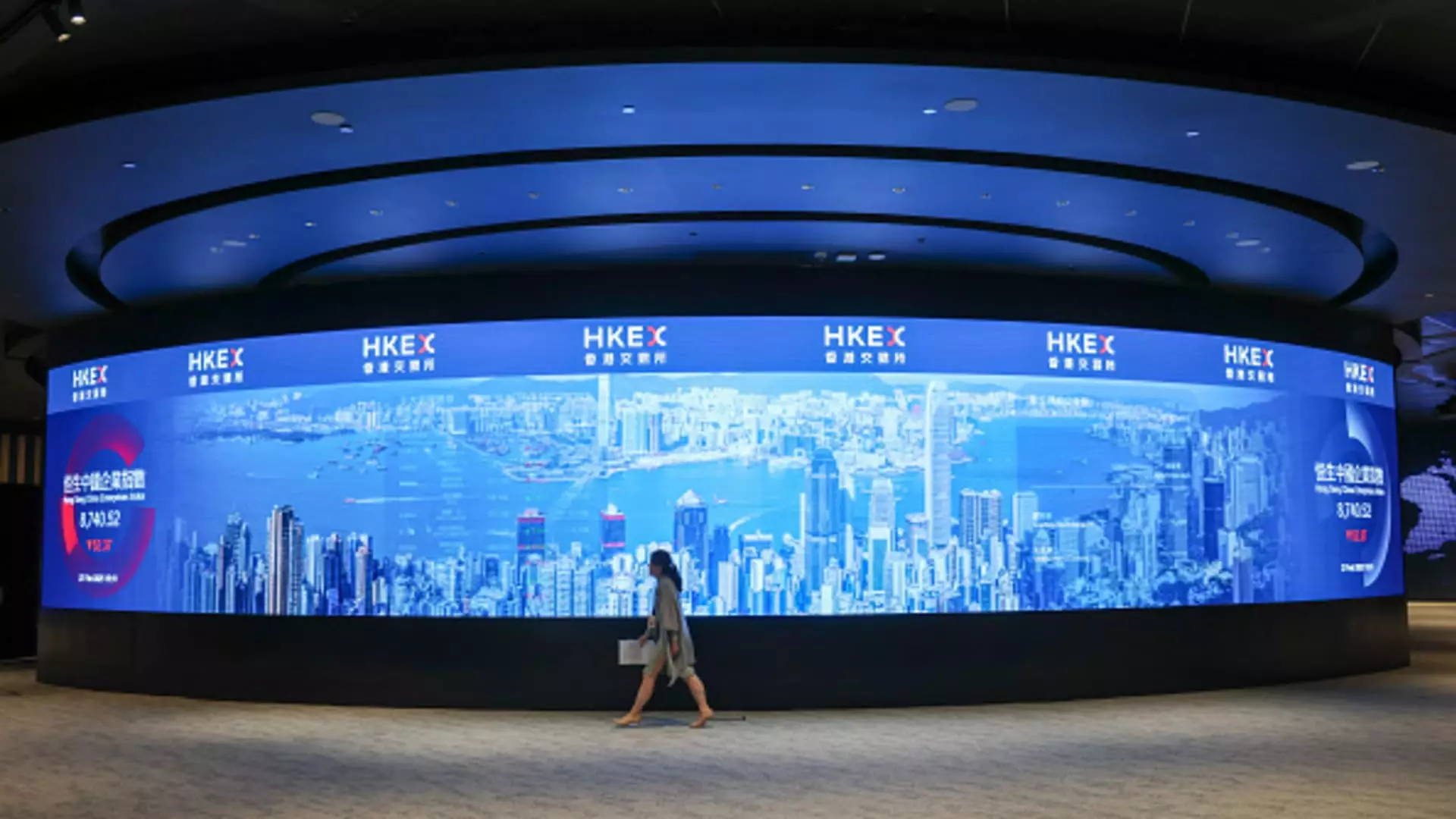Mainland Chinese investors are currently making headlines as they dive into the Hong Kong stock market with unprecedented vigor. Recent data indicates that net purchases by mainland investors soared to a remarkable 29.62 billion Hong Kong dollars (approximately $3.81 billion) in a single day. This marks the highest influx since the inception of the “connect” program, which has made it significantly easier for investors from mainland China to access stocks traded in Hong Kong. Alerts have been sounding across the financial landscape as these figures represent not just a trend, but a paradigm shift in investment strategies.
The Hang Seng Index, predominantly laden with tech stocks, now dances around three-year highs, garnering attention from market watchers worldwide. While the index saw a slight dip of 0.7% following a concerning sell-off in U.S. equities—driven by trade tariff anxieties—the allure of Hong Kong’s market remains strong among mainland investors.
Understanding the Connect Program and Its Impact
Launched between 2014 and 2016, the Shanghai and Shenzhen Connect programs set the stage for cross-border investment, enabling mainland investors to explore opportunities in the Hong Kong market. The sheer scale of investments seen this week signals that these mechanisms have matured into invaluable links for financial flows between Hong Kong and mainland China. With nearly 18 billion HKD funneled through the Shanghai Connect and 11.63 billion HKD from Shenzhen, the program has proven to be a game-changer for diversifying investment portfolios.
What’s fascinating about this surge is not merely the numbers, but the profound implications they hold for the tech sector. The influx of funds has mainly targeted stocks that are exclusive to Hong Kong, particularly mega-corporations like Alibaba and Tencent. These companies—well-known entities that investors on the mainland cannot purchase directly—have become beacons for investment, illuminating a path of opportunity amid geopolitical uncertainties.
The Policy Environment: Fueling Growth in Technology
Driven by a fresh wave of pro-growth fervor, the Chinese government has sent strong signals affirming their commitment to supporting the tech industry. Recent plans that include increasing the fiscal deficit to 4% of GDP reflect a significant pivot towards nurturing private sector innovation. This is not just rhetoric; the release of advanced technologies like Tencent’s AI video generator, Hunyuan, and Alibaba’s QwQ-32B, further underscores China’s ambition to be a leader in technology.
Indeed, the focus on nurturing home-grown tech resilience has shifted sentiments among institutional investors. Citi’s global macro strategy team recently shifted their outlook on Chinese equities to overweight, citing the underlying strength of China’s technological landscape despite external pressures like tariffs. The firm also downgraded U.S. equities to neutral—an illustrative move indicating a potential pivot in global investment priorities.
Emerging Markets Recaptured: Potential for Growth
The landscape of global investing is shifting, and with it, the focus is expected to increasingly center on emerging markets, particularly in Asia. Analysts like Manishi Raychaudhuri from Emmer Capital Partners predict that once the global stock markets begin to stabilize, capital will flow back into regions perceived as undervalued—including Greater China.
Raychaudhuri emphasizes China and Hong Kong as pivotal areas for investment. He notes that these markets remain relatively cheap and under-owned compared to other international markets, presenting unique buying opportunities. He identifies specific sectors poised for growth, including internet stocks, athleisure brands, and tourism-related industries, suggesting that these areas could attract significant investor momentum moving forward.
In an environment where policy measures are being tailored to boost consumption and stimulate growth, investors are poised to capitalize on the shifts within both local and global landscapes. As policymakers welcome these changes with open arms, the unique melding of tech advancement and strategic investment paves a promising path ahead for both the Hong Kong stock market and its mainland counterparts.
This evolving scenario presents an interesting paradox: while global economic winds seem to shift unpredictably, the confidence and dynamism emerging from the Chinese tech ecosystem signify a robust counterbalance, crafting an increasingly intriguing narrative for savvy investors.

